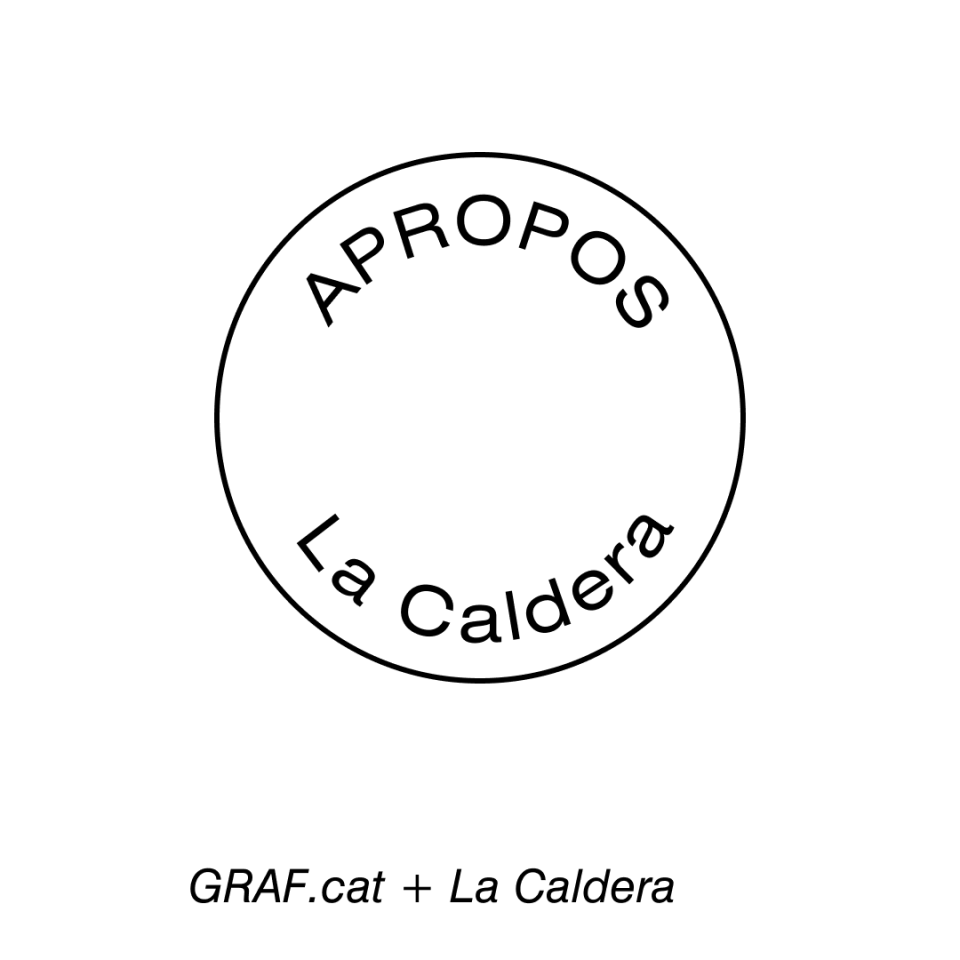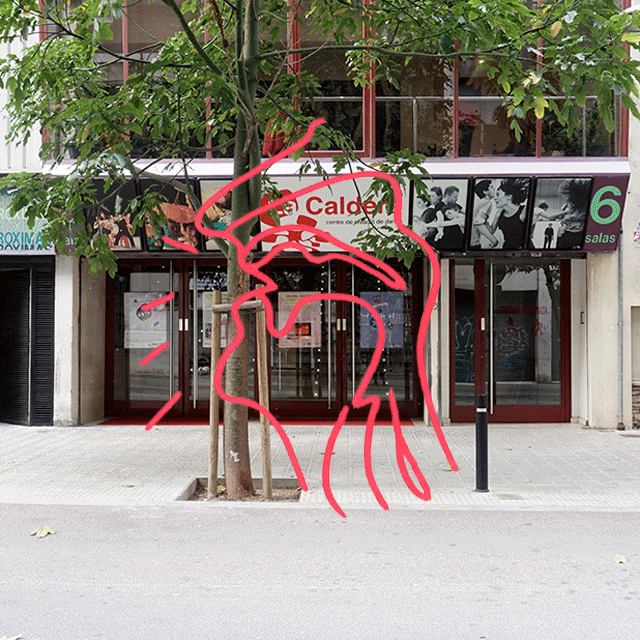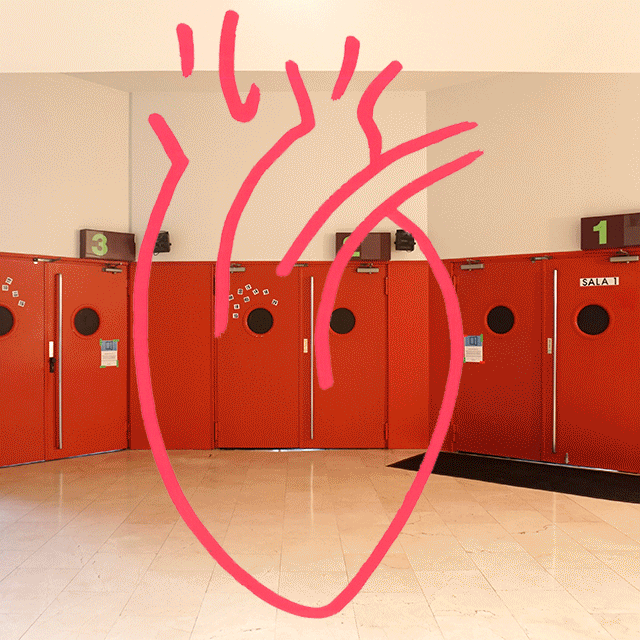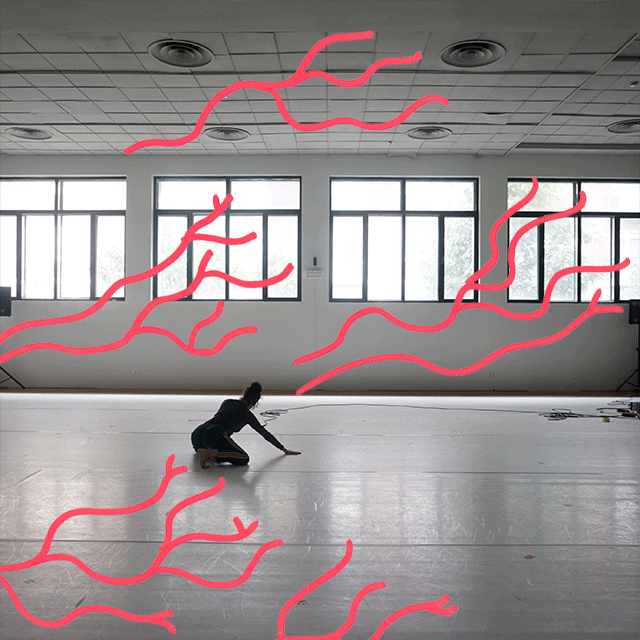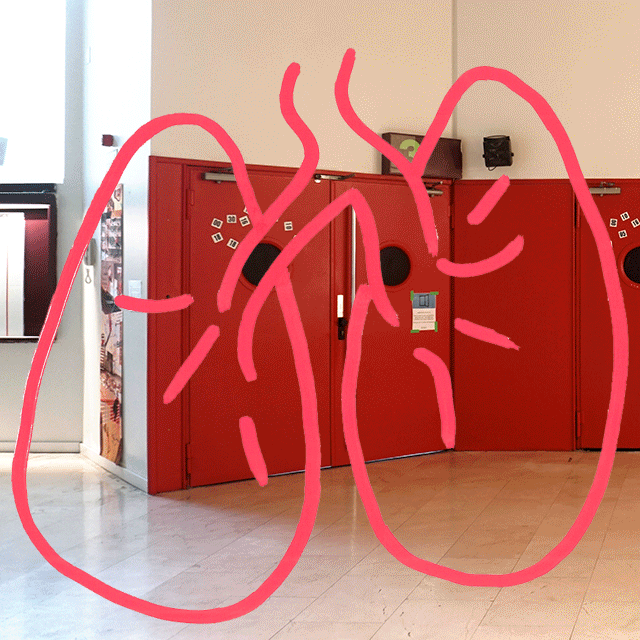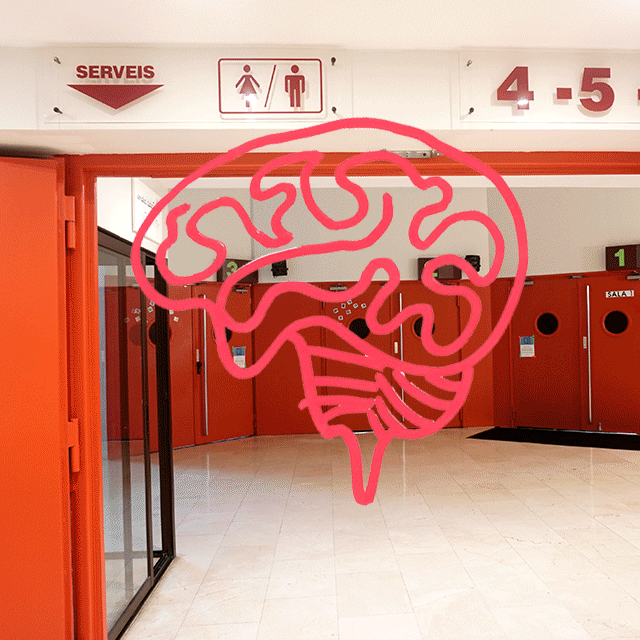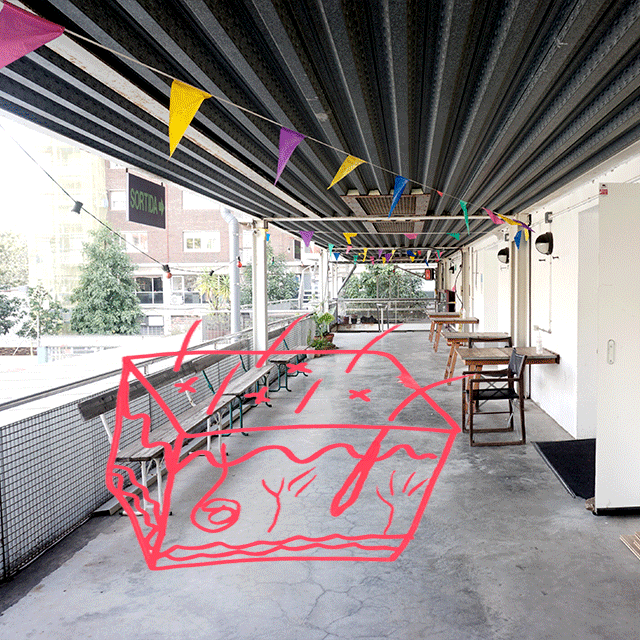info@graf.cat
‘The body of La Caldera from the inside’ by Graf
The friends of La Caldera invited us to make a bowel process with the aim of gutting -with love- the insides of this project that celebrated its 25th anniversary in a year, 2020, of few celebrations. However, we are ready to delve into this “Once upon a time the body” of La Caldera.
We anticipate that what follows is an honest and unabashed inventory of ways, doings, manners, friends’ appointments, practices, exercises and trial and error that always turn out well. Because as the saying goes, “the path is made by walking” and it takes a long way…
1 – Mouth, nose, ears, sex
Any orifice can be the entrance to this living and constantly changing organism. Because alive means just this, that it is not immobile, that it has to react to the situations surrounding it and that, therefore, it does and doesn’t explain to itself. So everyone can choose to enter through the overture that is most tempting to him.
Let’s start from the beginning. “Open the door for me Carles, I left my keys!” And he answers me, “the door is always open, at least during the day”.
La Caldera was started and is still managed by the Associació Cultural per al Desenvolupament d’Activitats Coreogràfiques (A.C.D.A.C.), a creative collective who in 1995 rented a space in the neighborhood of Gràcia to develop their artistic projects. In 2015 they move to Les Corts remodeling the place occupied by the Renoir cinemas and becoming a “movie” place for artistic practices based on the body and movement. Thus, it is incorporated into the public network of the Barcelona City Council’s Creation Factories.
“I’m from Sants and I studied high school in Les Corts. I remember we used to go with some friends to the Renoir cinemas, only to the cheap 16h sessions. We were always alone. And although the goal was to play the intellectuals, the reality is that we fell asleep after 15 minutes. The same room 4 of the naps, is the one I had assigned to rehearse in my residence with Laia” Marc Vives tells us.
2 – Heart
In a heartfelt way. What pumps La Caldera is the flow of artists that pass through it. Everything works around this organ. It is protected. The thoracic cavity guards against any external invasion. It gives the heart the space it needs, allows relaxed pulsations as well as tachycardic movements. And once you are a little piece of this heart, you will be for a long time. As time goes by, more and more pieces are added, they become linked in an irreversible relationship with each other and with the device. There is a mutual recognition. To cohabit is to sustain and make the machine work. This is what La Caldera Residences are like.
In a residence the most important thing is simply to be able to be and to be well, a great truism. For the heart to pump, it cannot be clutched in a fist and preoccupied with a thousand adjacent matters. Administrative issues are for artists that great traveling companion that does not let you do the work. In La Caldera there are no constant demands for materials for the web, the press or to get paid… And when that has to be done, because there is always a paperwork phase, it doesn’t weigh. Throughout the process the artists are never alone.
The workspace is clean and comfortable. There is no fighting. The light, the temperature, the silence, the internet, etc. work. These are not mere details.
Then there is listening. It helps if NO is removed as a flag. And at La Caldera, working procedures are not a mountain: you can ask for a projector or some cushions, require a change of space, ask or suggest without anyone looking down on you and also do everything possible to accommodate a demand, without smarmy promises or careless long-windedness.
Every year, more than 30 artists work in the rooms of La Caldera. Imagine what the heart is like now, after 25 years. And what happens when that listening and care extends beyond the residency. We could ask some like the Iniciativa Sexual Femenina, the Twins, Azkona and Toloza, Los Detectives, Nazario Díaz, Lara Brown, Esther Rodríguez Barbero, Julián Pacomio, Raquel Klein, nyamnyam, Lautaro Reyes, Laila Tafur, Amaranta Velarde or all the others.
3 – Blood
The blood that runs through my veins. A blood that is not stigmatized. With all the risks of contagion without neglecting one iota the attentions towards the other. Shared veins and intermingled fluids. Cures and diseases in company, even in unison. To evolve, to grow, bone must touch bone, blood must nourish them. Circulation as an exchange system.
Transmission means that, passing from one to the other. Not to be disconnected, to know that before you there was someone else, to learn with the young ones and to travel hand in hand with the more mature ones. What better way to remember and learn from the leaps and missteps than by sharing experience. And this is the logic of the Sporás, an invitation to creators to share their now with local artists, with all the fragility and generosity of the encounter. Lisa Nelson, Chrysa Parkinson, João Fiadeiro, Paz Rojo, Salva Sanchis… are some of the artists invited to the Spora Prógrama. In these video-interviews or Sporádes, they tell their experience and practice, in a document that is in itself a very accessible and tasty transmission tool.
With the new times, the laboratory format has become the hallmark of the house, as with the Brut Nature: a device that brings together some of the creators in residence at La Caldera, to share practices and let themselves be intoxicated by the creative universes of others. “To me, what these contexts have in common is the space and the time to share among different artists so that the creation is not always isolated, so that one can expose the questions one has or the methodology, the place where one is, or put oneself in the place of another’s proposal without it having to be a place of more mercantilist productivity. I believe that Brut has a lot of that, that it does not structure a previous format regarding how the dialogue has to take place or from where.” (Ana Buitrago, Brutzine)
To a certain extent, the whole ARAR project has been an expanded Brut, and sorting out this sort of constant sortilege in which we were involved last year. ARAR has become an experimental form of mutual accompaniment and proposals during a good part of the pandemic year. It may be a coincidence, but “Arate” is a word in Caló, which means blood, being, existence and also menstruation.
4 – Lung
The lungs produce the gaseous exchange between air and blood; they flank the heart on both sides. During respiration they contract and dilate. The moment arrives when the chest opens to go out. The processes have to catch air and we have not yet spoken of the lung of this gear.
The breath comes from the office where Raquel, Lucia, Cristina, Lera, Sarah, Carles, Laura and, of course, Oscar give enough energy so that the obsessions and inquiries of a few can be shared with a larger audience.
The artistic accompaniment goes all the way to that point, until the last spectator is literally in the chair. Because it is not enough to give the initial impulse to artists with risky proposals and to do it with all the sensitivity and empathy, but also to make these unusual productions accessible to the public.
The Programming section of La Caldera is in charge of programming, of course, in different lines of action. The house formats are Corpografías and Cápsulas de Creación en Crudo. The first is a space to make visible finished works that have been developed in residence at La Caldera and the second to share the projects in progress of the artists who are currently in residence, in an informal atmosphere.
The programming maintains close collaboration with other festivals and programs linked to the Barcelona City Council such as El Grec, Creació i Museus or the Quinzena Metropolitana. The Salmôn Festival, on its part, has been developed in its last edition by a mixed governance with Antic Teatre, La Caldera, Graner and La Poderosa, and by a team of artists curator+s or curander+s (Sofia Asencio, Bea Fernández, Iñaki Álvarez and Ariadna Rodríguez).
La Caldera is, to all intents and purposes, a reference agitator in the context of live arts. A stopping place for any artist. “It is the place that welcomed me in Barcelona in a very sensitive and very subtle way and that has put me in an organism, which I think I am part of now. In 2019 I did the residency and that’s why I participated in Brut and that’s why I connected with a lot of people and that’s why I participated in ESTO with Itxaso, Lara, Adelaine and Alba. And for being there, in the family-network of La Caldera, I have participated in ARAR and I will continue to be linked in the future. On the sidelines, I have presented some pieces with Nyamnyam or João Fiadeiro at the Sâlmon and for me everything is connected. But there are things I’ve done there that are somewhat more invisible, that I can’t name.”
5 – Brain
The brain in this case is tentacular, it does not sit on the shoulders but extends towards the extremities. And, as what a body thinks and knows is not easy to communicate, it is necessary to do exercises of recording and synthesis. Otherwise the memory of adult bodies would be lost and the essential chain of learning, which clearly and above all takes place outside schools, would be broken.
La Caldera’s publications have this function of reinforcing all the relational and contextual work. They are the catalyst of practices – never the practices themselves – that serve as a witness for those who were not able to experience them in the present. Moreover, all these publications are made from the body and for the body. This is the origin of “LO OTRO”, a line of La Caldera publications that brings together experiences such as ARAR, Brut Nature or ESTO, which are attentive looks at the processes of some artists in residence. Each one responds to different needs and in them the experimental aspect is fundamental. It is not trivial then that their visual identity is perceived as tactile and delicate. There is an idea of craftsmanship that extends to all their communication. All this deployment on paper is visible in the wall display cases in which the films of the cinema were advertised. And above all in the “sensitive library”, as they call it, a glass sideboard with all this material that is in the passage and forces you to stop and review its container.
Even the space occupation board is handmade.
“The word is that mystery, it is that thing that can be said, that can be written, that can be sung, that can be moved, right? and…and…and, it is a mystery because it is supposedly clear, it transmits, it says things, it has that rational, mental part, of language, but it also has all that more irrational part, the emotional part, the word is also. … this same thing that is happening to me now, that I don’t get it, that I want to say and I don’t get it, but I am saying with this that I don’t get it because I get it in other ways…”. (Itxaso Corral, Brutzine)
6 – Skin
Although we have spoken intensely about the importance of accommodating the artist in her creative processes, La Caldera is not a shell. Her skin is attentive and mutable to everything that happens around her.
That is why La Caldera maintains a constant dialogue with its surroundings, drawing non-professional audiences into the space. Once there, they generously share this space where things are half done and where they can learn about the intricacies of each practice. In this way families, groups linked to the neighbourhood or schools can form part of the processes of artists in constant experimentation, which are usually hidden and inaccessible.
These are the FAMILIAR, the EDUCATIONAL, or the COMMUNITARY lines that encourage the expansion in the exchange of audiences. Once again, there are programmes that are promoted by the City Council or the District of Les Corts, such as Danza en la escuelas, En Residència, la Festa Major, which are hosted. And others are produced by La Caldera, such as Barris en Dansa or Dansalabo. Of the latter, Xavi Manubens tells us “What I think it implies and affects these girls from the neighbourhood is that they keep repeating. When I took them on, they were very used to an artist arriving and proposing their practice, and then they join in. As the artist changes every three months, it’s normal for them and that’s great because they get involved in the game straight away, they already have the dance codes incorporated, even the work in a theatre studio. They feel completely familiar at a very young age, 8-9 years old and younger. On a personal level, what I find most valuable is that they are girls who have been coming to this kind of workshop for maybe 2 or 3 years, and are not only growing up and getting older with the artists. Moreover, some of the veterans are like ‘They owned the place’ in La Caldera. And it is very cool to see they know all the corners and know the rooms, today at 6 o’clock, today at 1 o’clock ‘. In other words, they master the use of space, of things, of the human staff ‘anem a fer una visita a la Lucia’. Suddenly La Caldera becomes a home, and not only for the artists. ”
–
APROPOS are contents made about something that happens in our artistic context. In this case, with the intention of making visible the inside of the body of La Caldera and its various ramifications, from GRAF we have generated this content to celebrate and make known that La Caldera is already more than a quarter of a century old, with a whole accumulated history, a present in continuous vibration and a future of continuation nurturing and nourishing around it.




